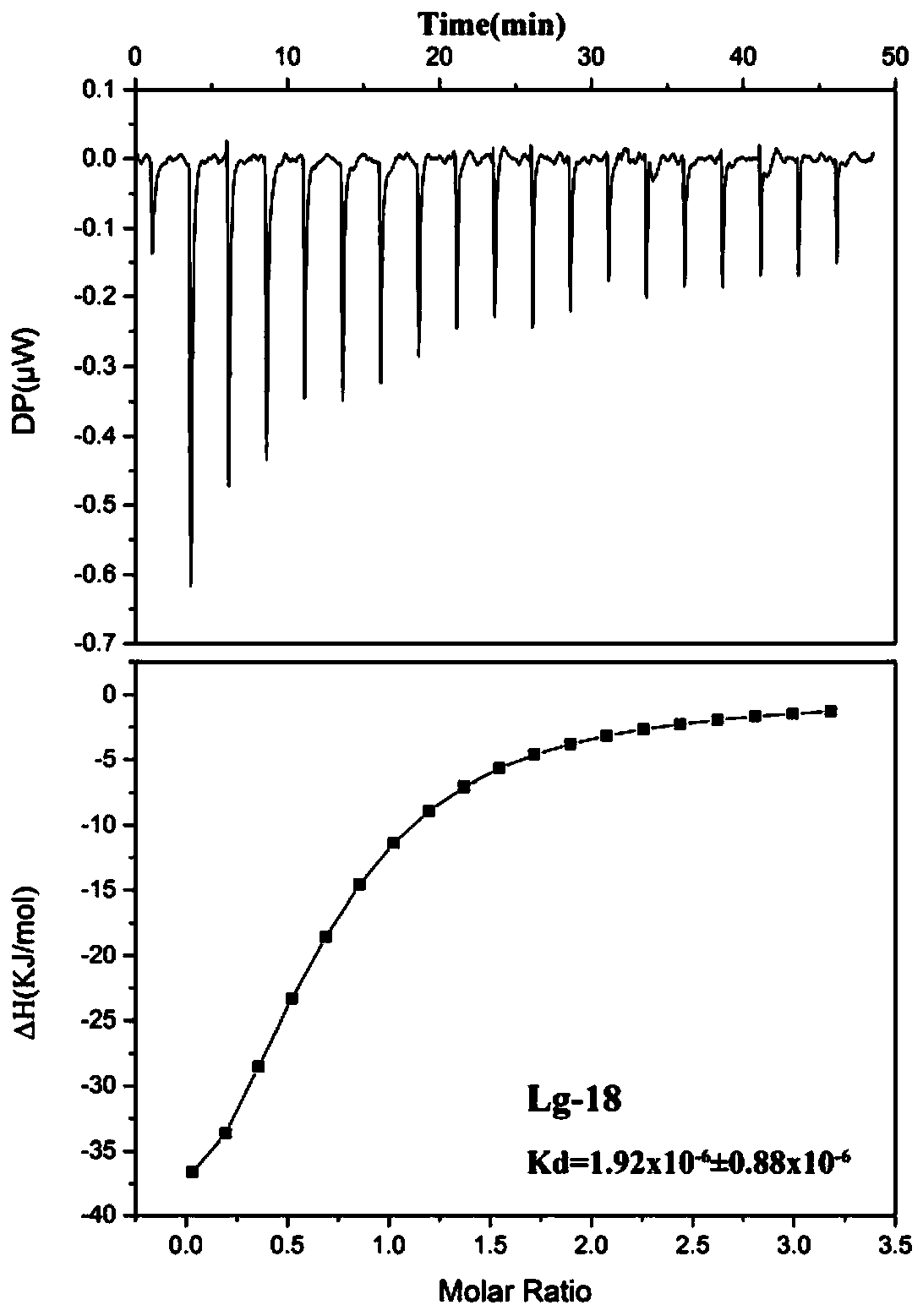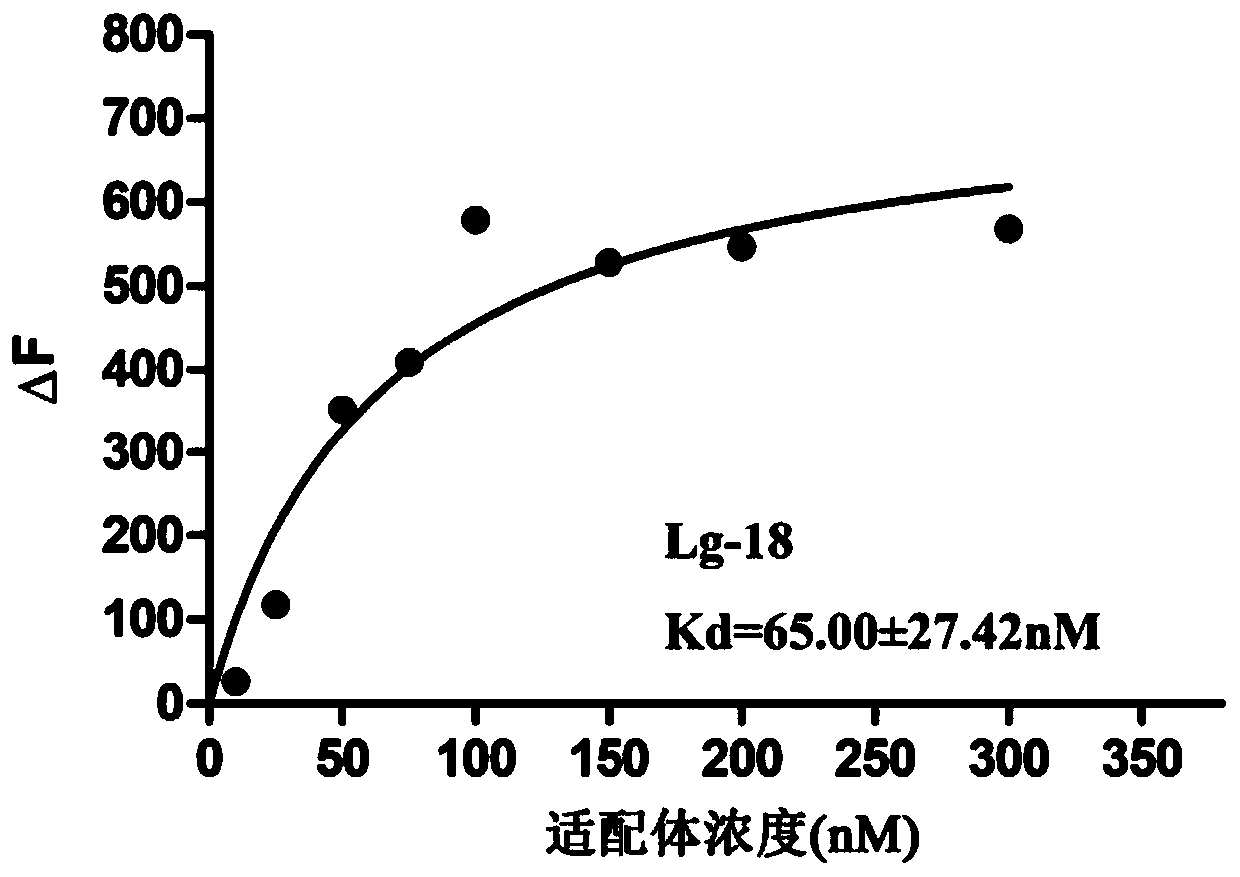Nucleic acid aptamer capable of specifically recognizing beta-lactoglobulin and application of nucleic acid aptamer
A nucleic acid aptamer and lactoglobulin technology, which is applied in the fields of biology and medicine, can solve the problems of large application limitations, poor repeatability, and high cost, and achieve wide application range, good affinity and specificity, and low cost. low effect
- Summary
- Abstract
- Description
- Claims
- Application Information
AI Technical Summary
Problems solved by technology
Method used
Image
Examples
Embodiment 1
[0040] Design and synthesis of high-capacity single-stranded oligonucleotide library and primers
[0041] A single-stranded oligonucleotide library with a length of 80nt and a library capacity of up to 1012-1024 was constructed, consisting of a random sequence region of 40nt in the middle (determining the richness of the library), and a fixed sequence region of 20nt at both ends (necessary for binding primers) sequence) composition. The sequence is: 5'-AGCAGCACAGAGGTCAGATG-40random base-CCTATGCGTGCTACCGTGAA-3' was synthesized by Dalian Bao Biological Co., Ltd.
[0042] Forward primer: 5'-FAM-AGCAGCACAGAGGTCAGATG-3'
[0043] Reverse primer: 5'-P-TTCACGGTAGCACGCATAGG-3'
[0044] Biotinylated complementary short strand: 5'-Biotin-AGCACGCATAGG-3'
[0045] Primers were synthesized by Sangon Bioengineering (Shanghai) Co., Ltd.
[0046] Both the single-stranded oligonucleotide library and primers were made into 100 μM stock solution with TE buffer and stored at -20°C for later us...
Embodiment 2
[0048] Screening of allergen β-lactoglobulin aptamers based on Capture-SELEX technology
[0049] The single-stranded oligonucleotide library was first complemented with biotinylated complementary short strands, then immobilized on streptavidinized magnetic beads, and incubated with the allergen β-lactoglobulin, due to the single-stranded Nucleic acid interacts with β-lactoglobulin to detach from the magnetic beads and release it into the solution. After incubation, the supernatant is used as a template for the secondary library for PCR amplification, and then the single strand is prepared by enzyme digestion, alcohol precipitation, etc. The secondary library was used for the next round of screening. Specific steps are as follows:
[0050] The single-stranded oligonucleotide library is complementary to the biotinylated complementary chain: the ssDNA library and the biotinylated complementary short chain are mixed at a ratio of 1:1.5 (the amount of the single-stranded oligonucl...
Embodiment 3
[0057] Affinity and Specificity Analysis
[0058] (1) Affinity analysis based on isothermal titration calorimetry (ITC)
[0059] Binding analysis was performed on 10 candidate sequences using PEAQ-ITC (Malvern Instruments Ltd., UK). First, inject 300 μL of β-lactoglobulin solution (6 μM) into the sample cell, suck 38 μL of aptamer solution (100 μM) into the sampling needle, and set the program as the initial titration volume of the first drop of the sampling needle is 0.4 μL (avoid the injection at the top of the sampling needle). The sample reacts with the sample in the sample cell to affect the final result), followed by 18 drops of 2μL, with an interval of 150s, and the rotation speed of the injection needle is 750rpm to ensure that each injection is fully reacted. At the same time, the heat of dilution caused by the titration of the buffer into the β-lactoglobulin solution was subtracted. The binding force and thermodynamic parameters in the binding process can be obtain...
PUM
 Login to View More
Login to View More Abstract
Description
Claims
Application Information
 Login to View More
Login to View More - R&D
- Intellectual Property
- Life Sciences
- Materials
- Tech Scout
- Unparalleled Data Quality
- Higher Quality Content
- 60% Fewer Hallucinations
Browse by: Latest US Patents, China's latest patents, Technical Efficacy Thesaurus, Application Domain, Technology Topic, Popular Technical Reports.
© 2025 PatSnap. All rights reserved.Legal|Privacy policy|Modern Slavery Act Transparency Statement|Sitemap|About US| Contact US: help@patsnap.com



